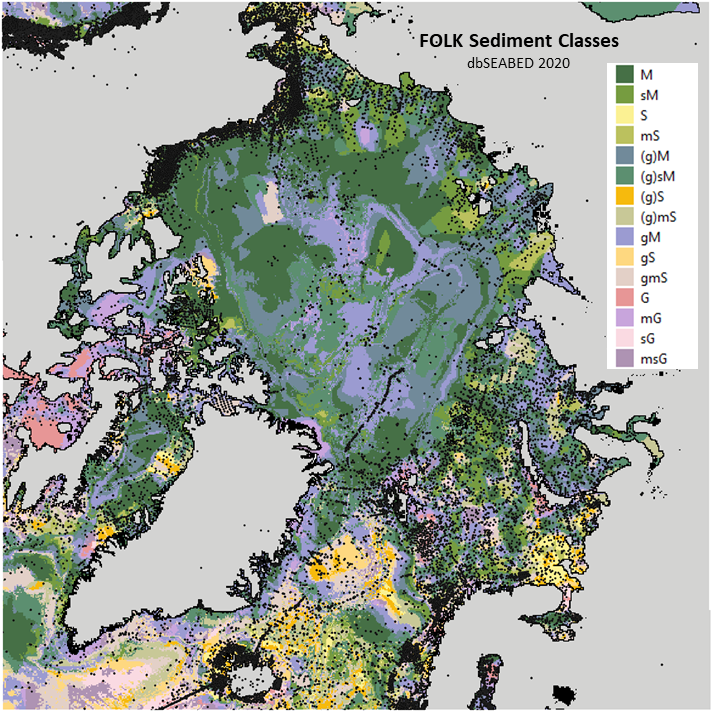The author(s) will give a talk
Arctic seabed: New detailed mappings of compositions and physical properties
1 INSTAAR CU
The sediment textures, rock areas, carbon and carbonate contents, seafloor colors, and porosities and shear strengths are described in new mappings now released through INSTAAR CSDMS (see fig). They will be useful for research in diverse fields: marine ecology, stratigraphy, biogeochemistry, geoacoustics.
They were constructed using dbSEABED methods (tinyurl.com/dbSEABED) to over 2,300 datasets. The foundational data were obtained from multitudes of individual published papers and unpublished reports, published maps, and large data structures such as PANGAEA (pangaea.de, Germany) and the Expedition Database (ed.gdr.nrcan.gc.ca, Canada). Data from direct sampling as well as visual and probe observations are held, but not bathymetry or backscatter results (exception: rock areas).
From the foundational data, application software extracts useable data on defined parameters and their close synonyms (e.g., mean, median and graphic mean grainsizes), having regard to target uncertainty bounds (+-10% 1-sigma).
The first results are gridded at 0.1 degree, which is appropriate given that data densities vary greatly, but are thin over wide areas (see figure). The grids are presented in the equal-area IBCAO polar stereographic projection. The gridding method for the present data release was a ‘2.5D’ (grid x,y, water depth z) Inverse Distance Weighted method, with data selection on a graph that is restricted to marine inundated areas. This had many advantages in this setting: is a transparent (not black-box) method; is faithful to the depth-related ecological zonations; deals correctly with physiographic features (such as seamounts and canyons); computes results locally (not from a map-wide model); and is able to provide spatially explicit uncertainty statistics.
dbSEABED is a globally-extensive data resource but in the Arctic context a set of special technical problems with databasing had to be solved including how to treat: allochthonous IRD (e.g., dropstones); very large grain sizes (such as IRD boulders); ice and permafrost materials; layerings in cores some of which will be disturbed (turbated); challenges for interpolation inside the Canadian Archipelago.

Fig 1.
FOLK sediment classes from dbSEABED 2020.